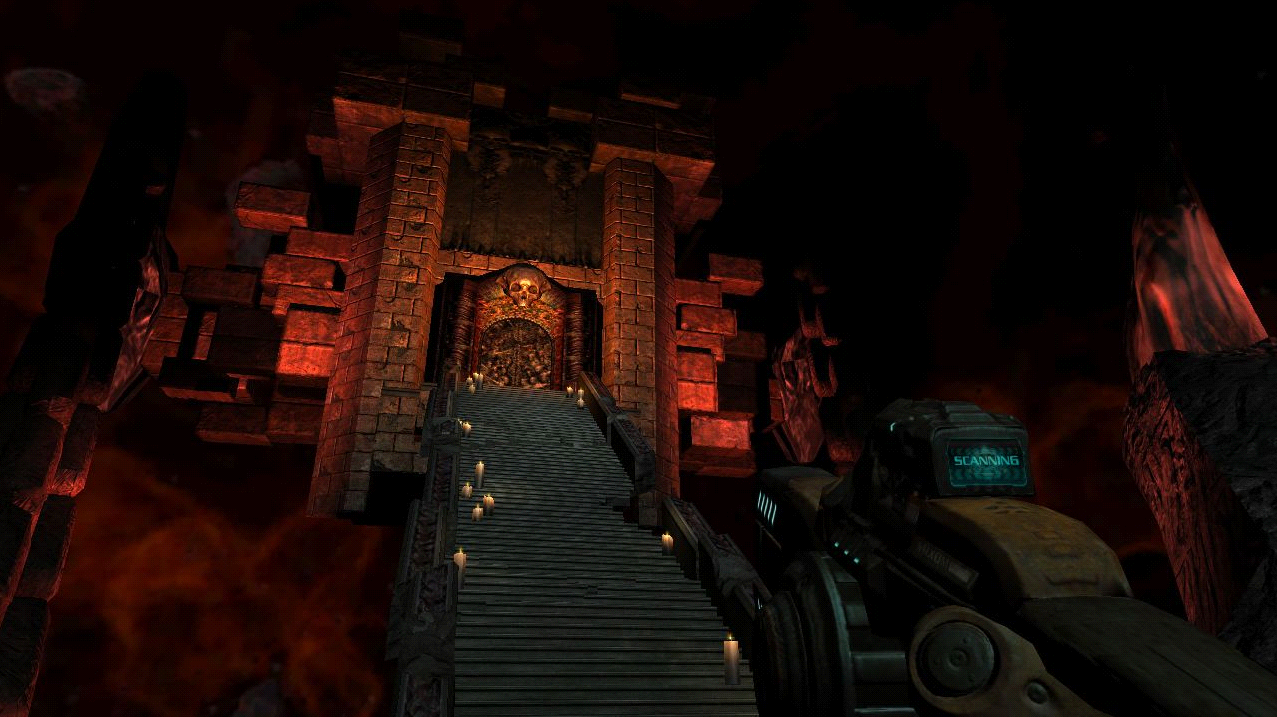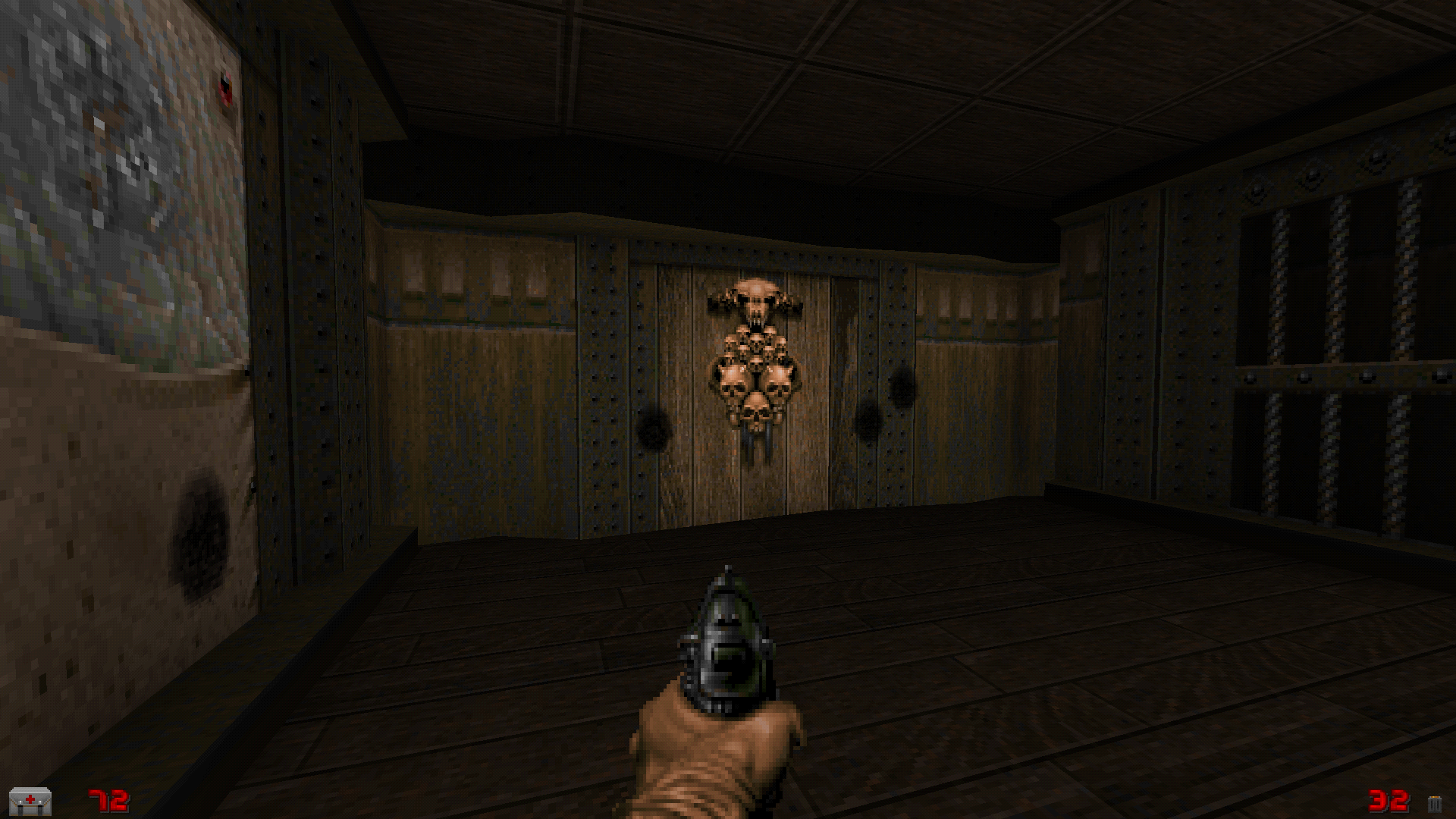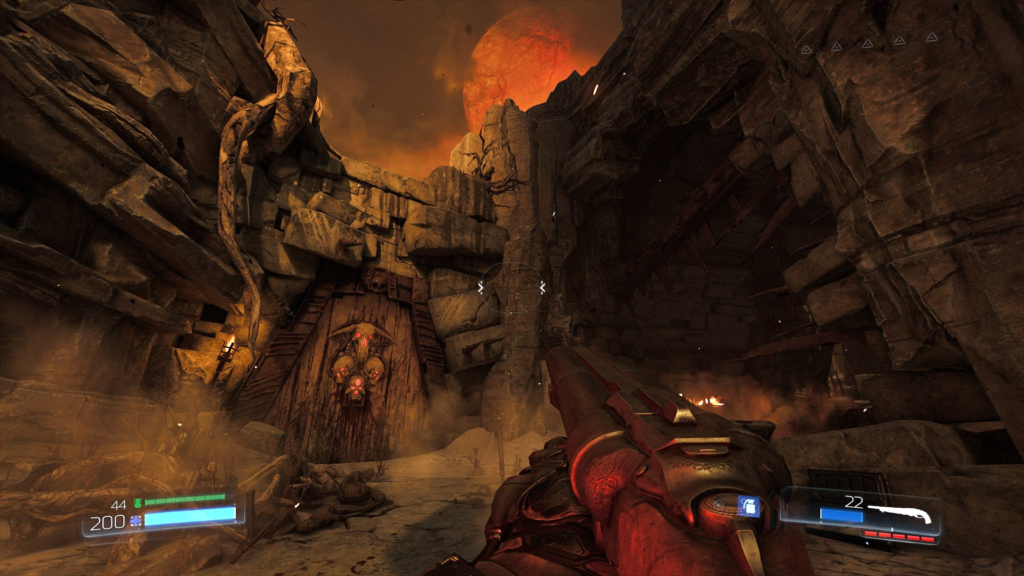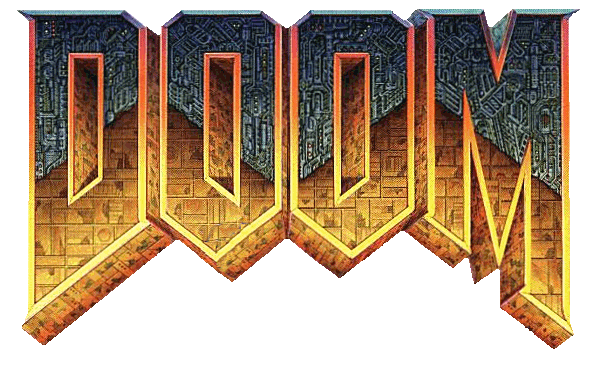Through their passion, expertise and talent, our artists shape worlds and universes. Their dedication breathes new life into a wooden table or a piece of clothing. We love creating 3D art for video games, but often we also love just booting up out platform of choice and playing! And some games leave such an impact on us that we can never forget them, no matter how old they are. This is the case with Octavian Fenes, Junior Artist, who really loves DOOM and wants to share a little bit of his fascination with us all. Happy reading!
Hi, everyone! In this article, I’d like to talk about what I consider to be one of the best game series of all time, namely DOOM (id Software). I believe that these games have a unique art style that is preserved and expanded upon in subsequent titles.

One of the most interesting things about the original games is the abstract level design. DOOM was born in a time when computers were so much slower. I mean, the worst smartphone today is much more powerful than state of the art hardware in 1993. The developers were therefore forced to adapt, and it actually turned out to be one of its defining characteristics and what sets it apart from other games. The levels in the original DOOM have nothing in common with reality, except for vague, brief moments that serve to remind you that you are supposed to be in a Hangar, or a Nuclear Power Plant or some kind of cargo area. It not only facilitates wildly creative gameplay and visuals, but it also gives the game an air of mystery, allowing the player to fill in the blanks themselves.

John Romero, co-creator of DOOM, also released a separate, unofficial episode called SIGIL. It was made with modern Doom modding tools and, while it is more detailed than the original, it still strictly adheres to the original style of classic Doom.
The UAC (Union Aerospace Corporation)
The UAC bases are defined by a grungy, industrial theme. They feel decidedly anti-human and their layouts are often confusing. You walk in and an overall sense of distant dread fills you. You are completely alone. It is just you and the demons hiding in the walls.
In the first level, Hangar, there is a starkly decorated room with a few textures that seem to be computer panels. Some kind of control tower? There are no chairs, no tables, no clipboards with notes, no pictures of family members on office desks, no cafeterias serving food, nothing that indicates that humans actually worked there at one point, only the vague impression of a place.


No one knows for sure what these places actually are but there are often hints that help our imaginations go in the right direction, such as level names and certain structures. The environments of DOOM don’t make sense on a realistic, logical level, but they make sense on an emotional level and that is what makes them timeless.
Hell
Now we get to what is arguably the most interesting place in DOOM: Hell, the dimension of the demons. This is the theme that embraces the abstract nature of DOOM the most. If the game vibe feels anti-human in the UAC bases, it feels perfectly at home in Hell. This is where any semblance of reality is thrown out of the window.

As you move through Hell, it becomes apparent that the demons have no culture, no impulses other than the basest of instincts. They do not make delicate, elaborate structures, only crudely thrown-together buildings. And when they do create familiar structures, they are mockeries of what they represent, base imitations. I believe the only reason they create them in the first place is because of the emotional response they receive from them. The demons are expressions of pure id and their hideous constructions are a reflection of this. The id is, according to Freud:

“[…] the dark, inaccessible part of our personality, what little we know of it we have learned from our study of the dreamwork, and, of course, the construction of neurotic symptoms and most of that is of a negative character, and can be described only as a contrast to the ego. We approach the id with analogies: we call it a chaos, a cauldron full of seething excitations.” – Sigmund Freud, New Introductory Lectures on Psychoanalysis, 1933

DOOM’s unique art style is preserved even across games that are decades apart. The environments in the new games look like they could be “demade” in the old games and vice versa. This maintains a kind of visual consistency that is rarely seen in other game series. As such, it manages to maintain this visual consistency even if later games take the series in either a darker or more whimsical direction. Sometimes, there are even textures made in 1993 that are lovingly recreated by the artists.




Well, to conclude, I will also include a translation I made of a short story written by a famous author from my country named Mircea Cartarescu, nominated for the Nobel prize twice! The story is called Computer Games forever and while it is about a different game called Heretic, that game is like DOOM in a medieval setting and it perfectly captures the atmosphere of id Software games. You can read it here.
By Octavian Fenes, Junior 3D Environment Artist.
Edited for length and clarity.

